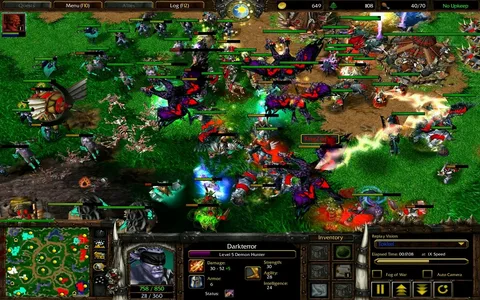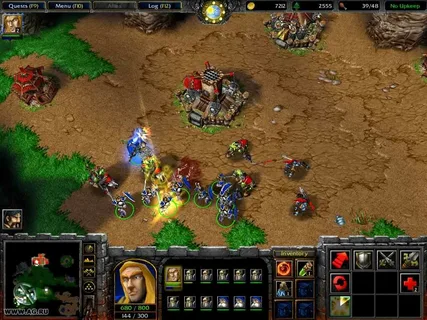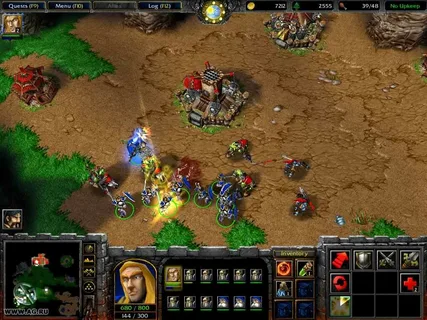Download game warcraft pc full version
World of Warcraft (WoW) is a massively multiplayer online role-playing game (MMORPG) developed by Blizzard Entertainment. Released in 2004, it has become one of the most iconic and influential games in the history of gaming. Set in the fantasy universe of Azeroth, WoW allows players to create characters, explore vast landscapes, complete quests, and engage in epic battles.
The Evolution of World of Warcraft
Early Beginnings
World of Warcraft was announced in 2001 and released in 2004 to celebrate the 10th anniversary of the Warcraft franchise. The game quickly gained popularity, reaching a peak of 12 million subscribers in 20101. The game’s success can be attributed to its immersive world, engaging gameplay, and continuous updates.
Expansion Packs
WoW has released numerous expansion packs over the years, each adding new content, features, and storylines. Some of the most notable expansions include:
- The Burning Crusade (2007)
- Wrath of the Lich King (2008)
- Cataclysm (2010)
- Mists of Pandaria (2012)
- Warlords of Draenor (2014)
- Legion (2016)
- Battle for Azeroth (2018)
- Shadowlands (2020)
- Dragonflight (2022)
- The War Within (2024)
For a detailed list of expansions, check out Blizzard’s official news page.
Gameplay Mechanics
Character Creation and Progression
In WoW, players start by creating a character, choosing from various races and classes. Each race and class offers unique abilities and playstyles. As players progress, they earn experience points (XP) to level up their characters, making them more powerful and unlocking new abilities.
Quests and Exploration
Quests are a core component of WoW, guiding players through the game’s story and providing rewards such as XP, gold, and items. The game’s world is vast, with diverse regions to explore, from lush forests to barren deserts. Players can also engage in player versus player (PvP) combat, dungeons, and raids.
Community and Social Interaction
Guilds and Group Play
WoW encourages social interaction through guilds, which are groups of players who band together for mutual benefit. Guilds often organize group activities such as dungeon runs, raids, and PvP battles. Joining a guild can enhance the gaming experience by providing a sense of community and support.
In-Game Economy
The in-game economy is another vital aspect of WoW. Players can buy and sell items using in-game currency, trade with other players, and participate in the auction house. This dynamic economy adds depth to the game and allows players to acquire better equipment and resources.
The Impact of World of Warcraft
Cultural Influence
WoW has had a significant impact on popular culture, inspiring books, comics, and even a feature film. The game’s characters and lore have become iconic, and its influence can be seen in various media. For more on its cultural impact, you can read this Kotaku article.
Gaming Industry
WoW set the standard for MMORPGs and influenced many other games in the genre. Its success demonstrated the potential of online gaming and paved the way for future MMORPGs. The game’s longevity and continuous updates have kept it relevant for nearly two decades.
Future of World of Warcraft
Upcoming Expansions
Blizzard continues to support WoW with new expansions and updates. The upcoming expansion, “The War Within,” promises to deliver an epic storyline and new gameplay features. Players can look forward to exploring new regions, facing new challenges, and uncovering more of Azeroth’s rich lore.
Community Engagement
Blizzard remains committed to engaging with the WoW community, listening to feedback, and making improvements. The development team is always looking for ways to innovate and enhance the gaming experience. For the latest updates, visit Blizzard’s news page.

Features of Warcraft
The Warcraft series boasts several standout features that contribute to its enduring popularity. Here are some key highlights:
- Expansive World: Players can explore a vast and detailed world filled with lore, quests, and hidden treasures.
- Multi-Player Capabilities: Engage with friends or other players worldwide in cooperative play or competitive battles.
- Character Customization: Choose from various races and classes, each with unique abilities and play styles, allowing for personalized gameplay.
- Regular Updates: Blizzard continually enhances the game with updates, expansions, and events, keeping the experience fresh and engaging.
These features not only enhance gameplay but also foster a vibrant community of players who share strategies, tips, and experiences.
Technical Specifications
Before you embark on your journey through Azeroth, it’s essential to understand the technical specifications of the game. Here’s what you need to know:
- Version: Latest Release
- Interface Language: English (multiple languages available)
- Design by: Blizzard Entertainment
- Type of Game: MMORPG/Real-Time Strategy
- Audio Language: English (varies by region)
- Uploader / Repacker Group: Various (check the source)
- File Name: Warcraft_Full_Version.exe
- Download Size: Approximately 30 GB

System Requirements
To ensure a smooth gaming experience, here are the minimum and recommended system requirements:
- Minimum Requirements:
- OS: Windows 7/8/10
- Processor: Intel Core i3 or AMD Phenom X3
- Memory: 4 GB RAM
- Graphics: NVIDIA GeForce 760 or AMD Radeon RX 560
- DirectX: Version 11
- Storage: 30 GB available space
- Recommended Requirements:
- OS: Windows 10
- Processor: Intel Core i5 or AMD Ryzen 5
- Memory: 8 GB RAM
- Graphics: NVIDIA GeForce GTX 960 or AMD Radeon R9 280
- DirectX: Version 11
- Storage: 30 GB available space

Downloading and Installing Warcraft
To download and install the game, follow these steps:
- Click on the Download Button: Navigate to a trusted website such as Get Into PC or Ocean of Games to find the download link.
- Run the Setup: Locate the downloaded file (Warcraft_Full_Version.exe) and double-click to run it.
- Enter Password: If prompted, enter the password provided on the download page to proceed with installation.
- Follow Installation Prompts: Complete the installation by following the on-screen instructions.


Leave a Reply